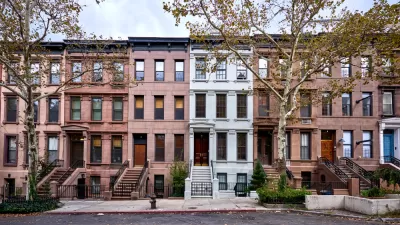Cities with populations between 25,000 and 100,000 continue to see an influx of migrants lured by lower costs of living and high quality-of-life metrics.

According to an article by Zoe Manzanetti, a new report quantifies the factors behind the urban exodus that began before 2020 and was accelerated by the pandemic. The report compared key social and economic factors in small cities—those with populations between 25,000 and 100,000—around the country and measured how they score on a variety of metrics that include cost of living, commute time, crime rates, and urban amenities.
Manzanetti quotes Jerry Anthony, an associate professor at the University of Iowa, on the benefits of small cities:
"Usually lower-cost housing, a better sense of community and connectedness to events and activities in the community, more opportunities to make a tangible difference through civic engagement, a greater sense of fulfillment and life satisfaction [and…] much less time spent commuting or traveling within the city."
The article details the scores of the cities in the top and bottom percentiles of the study on measures such as affordability, economic health, and safety.
Small cities have experienced steady growth as new flexibility offered by remote work, coupled with a desire to escape the confines of crowded urban areas during the pandemic and the spike in housing costs in major cities, have pushed many Americans to move out of metropolitan areas altogether and embrace the opportunities presented by smaller towns. This, in turn, has led to a rise in home prices and a phenomenon known as rural gentrification that, like its urban counterpart, threatens to displace long-term residents by pricing them out of the local housing market.
FULL STORY: The Migration to Smaller Cities Will Continue Post-Pandemic

Alabama: Trump Terminates Settlements for Black Communities Harmed By Raw Sewage
Trump deemed the landmark civil rights agreement “illegal DEI and environmental justice policy.”

Study: Maui’s Plan to Convert Vacation Rentals to Long-Term Housing Could Cause Nearly $1 Billion Economic Loss
The plan would reduce visitor accommodation by 25% resulting in 1,900 jobs lost.

Planetizen Federal Action Tracker
A weekly monitor of how Trump’s orders and actions are impacting planners and planning in America.

Federal Homelessness Agency Places Entire Staff on Leave
The U.S. Interagency Council on Homelessness is the only federal agency dedicated to preventing and ending homelessness.

Restoring Northern India’s Himalayan ‘Water Temples’
Thousands of centuries-old buildings protect the region’s natural springs and serve as community wells and gathering places.

Milwaukee to Double Bike Share Stations
Bublr Bikes, one of the nation’s most successful, will add 500 new e-bikes to its system.
Urban Design for Planners 1: Software Tools
This six-course series explores essential urban design concepts using open source software and equips planners with the tools they need to participate fully in the urban design process.
Planning for Universal Design
Learn the tools for implementing Universal Design in planning regulations.
Caltrans
Smith Gee Studio
Institute for Housing and Urban Development Studies (IHS)
City of Grandview
Harvard GSD Executive Education
Toledo-Lucas County Plan Commissions
Salt Lake City
NYU Wagner Graduate School of Public Service





























